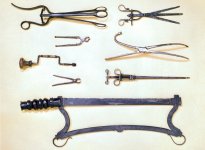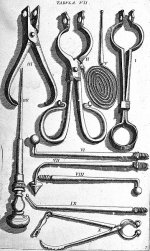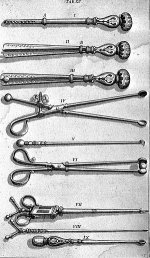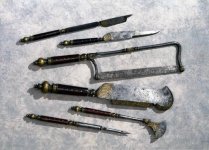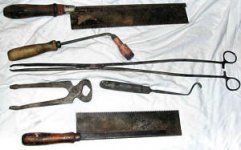POMPEII
The official version states that in 79 A.D. the ancient Roman city of Pompeii was buried under 4 to 6 m (13 to 20 ft) of volcanic ash in the eruption of Mount Vesuvius. The site was eventually lost until its initial rediscovery in 1592 and broader rediscovery almost 150 years later in 1748.After thick layers of ash covered Pompeii and Herculaneum, they were abandoned and eventually their names and locations were forgotten. The first time any part of them was unearthed was in 1599, when the digging of an underground channel to divert the river Sarno ran into ancient walls covered with paintings and inscriptions. The architect Domenico Fontana was called in; he unearthed a few more frescoes, then covered them over again, and nothing more came of the discovery. Pompeii was rediscovered as the result of intentional excavations in 1748 by the Spanish military engineer Rocque Joaquin de Alcubierre.
Roque Joaquín de Alcubierre was a military engineer in the Spanish Army
who discovered architectural remains at Pompeii and Herculaneum in 1748.
1702-1780
- If Pompeii was not discovered and identified prior to 1748, than any mentioning of it prior to 1748 would be a clear and obvious evidence of the scientists trying to substitute true world chronology with bogus data.
I plan on showing you that Pompeii suffered its fate in 1631, which makes our official history 1,552 years off. I have a pretty strong feeling that the official liars (and I do not mean your local history teacher) know about their mess up. Unfortunately for them, there was some supporting fake evidence created, and it is no longer possible to portray this Pompeiigate as a simple mistake. They simply cannot play it down due to some highly questionable "fakish" evidence of the Vesuvius eruption, and Pompeii/Herculaneum destruction, created to support the date of 79 A.D. The "officials" tied too many historical individuals into this story. It is impossible to correct the timing of the destruction of Pompeii without messing up the entire timeline. Below is an example of such evidence.
Our official history claims he stated the following about the Roman Emperor Titus , "There were some dreadful disasters during his reign, such as the eruption of Mount Vesuvius in Campania, a fire at Rome which continued three days and as many nights, and a plague the like of which had hardly ever been known before."
39 A.D. - 81 A.D.
My Point: If the eruption indeed took place in 1631, than this Suetonius account is either a fake figure, or he lived at a totally different time. Considering that Titus is tied into the entire history of the Ancient Rome... fill in the blanks yourself.
Note: Various internet sources were used to put this list together.
List of evidence pointing to 1631
1. Old Maps: 1514, 1570, 1575, 1603
2. Etchingss: 1633
3. Epitaffio di Portici: 1631
4. The Three Graces: 1st century AD vs. 1503/1505
5. Pineapples on the Pompeii frescoes
6. Domenico Fontana's Water Conduit: 1590s and water wells
7. Piranesi and Pompeii
8. Christianity in "Before Christ" Pompeii, ROTAS (CIL IV 8623)
9. Pompeii Surgical Tools
1. Old Maps
1514, 1570, 1575, 1603
***
1514 Opusculum, Distinctum, Plenum, Clarum, & Utile
Leone, Ambrogio, 1458/9 - 1525

1570 Ortelius Regni Neapolitani verissima / Link 2
Ortelius, Abraham, 1527-1598

1575 Regno Di Napoli / Link 2
Lafreri, Antonio, 1512 - 1577

1603 Italia Antiqva
Philipp Clüver 1580 - 1622

2. Etchings
Done in 1633. Pertains to the eruption of 1631.
Mascolo, Giovanni Battista, 1582/3 - 1656, “Mount Vesuvius before / after the eruption,”
Loyola University Chicago Digital Special Collections
- Before -

- After -

3. Epitaffio di Portici
Following the disastrous eruption of Vesuvius in 1631, the Viceroy Zunica had an Epitaffio placed to admonish the dangers of the volcano in the future. The epitaph is placed in the current corner between Corso Garibaldi and Via Gianturco, just to the left of Palazzo Ruffo di Bagnara. Below is the original Latin version and the Italian translation by the Lions Club "Portici Miglio D'Oro" reported on a sign on the right of the Epitaph.1514, 1570, 1575, 1603
***
1514 Opusculum, Distinctum, Plenum, Clarum, & Utile
Leone, Ambrogio, 1458/9 - 1525
1570 Ortelius Regni Neapolitani verissima / Link 2
Ortelius, Abraham, 1527-1598
1575 Regno Di Napoli / Link 2
Lafreri, Antonio, 1512 - 1577
1603 Italia Antiqva
Philipp Clüver 1580 - 1622
2. Etchings
Done in 1633. Pertains to the eruption of 1631.
Mascolo, Giovanni Battista, 1582/3 - 1656, “Mount Vesuvius before / after the eruption,”
Loyola University Chicago Digital Special Collections
- Before -
- After -
3. Epitaffio di Portici
AT O
VIII ET LX POST ANNO XVII CALEND (AS) IANUARII
PHILIPPO IV REGE
FUMO, FLAMMIS, BOATU
CONCUSSO CINERE ERUPTIOHE
HORRIFICUS, FERUS SI UNQUAM VESUVIUS
NEC NOMEN NEC FASCES TANTI VIRI EXTIMUIT QUIPPE, EXARDESCENTE CAVIS SPECUBUS IGNE, IGNITUS, FURENS, IRRUGIENS,
EXITUM ELUCTANS. COERCITUS AER, IACULATUS TRANS HELLESPONTUMDISIECTO VIOLENTER MONTIS CULMINE,
IMMANI ERUPIT HIATU POSTRIDIE,
CINEREM
PONE TRAHENS AD EXPLENDAM VICEM PELAGUS IMMITE PELAGUS
FLUVIOS SULPHUREOS FLAMMATUM BITUMEN,
FOETAS ALUMINE CAUTES,
INFORME CUIUSQUE METALLI RUDUS,
MIXTUM AQUARUM VOIURINIBUS IGNEM
FEBRVEM (QUE) UNDANTE FUMO CINEREM
SESEQ (UE) FUNESTAMQ (UE) COLLLUVIEM
IUGO MONTIS EXONERANS
POMPEIOS HERCULANEUM OCTAVIANUM, PERSTRICTIS REАTINA ET PORTICU,
SILVASQ (UE), VILLASQ (UE), (UE)
MOMENTO STRAVIT, USSIT, DIRUIT
LUCTUOSAM PRAEA SE PRAEDAM AGENS
VASTUMQ (UE) TRIUNPHUM.
PERIERAT HOC QUOQ (UE) MARMOR ALTE SEPQLUM CONSULTISSIMI NO MONUMENTUM PROREGIS.
NE PEREAT
EMMAHUEZL FONSECA ET SUNICA COM (ES),
MONT IS RE (GIS) PROR (EX),
QUA ANIMI MAGNITUDINE PUBLICAE CALAMITATI EA PRIVATAE CONSULUIT
EXTRACTUM FUNDITUS GENTIS SUI LAPIDEM.
COELO RESTITUIT, VIAM RESTAURAVIT,
FUMANTE ADHUC ET INDIGNANTE VESEVO.
AN (NO) SAL (UTIS) MDCXXXV,
PRAEFECTO VIARUM
ANTONIO SUARES MESSIA MARCHI (ONE) VICI.
POMPEIOS HERCULANEUM OCTAVIANUM, PERSTRICTIS REАTINA ET PORTICU,



4. The Three Graces
What a bizarre coincidence, considering that Pompeii was not found until 1748,
and Raphael painted his masterpiece in 1503/5.
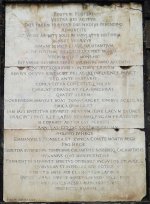
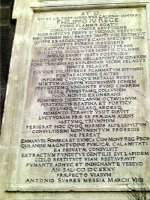
4. The Three Graces
What a bizarre coincidence, considering that Pompeii was not found until 1748,
and Raphael painted his masterpiece in 1503/5.
- Excavated Fresco: Roman civilization, 1st-century A.D. Fresco depicting the Three Graces. From Pompeii, Italy. Naples, Museo Archeologico Nazionale. Found on south wall of tablinum of IX.2.16. Now in Naples Archaeological Museum. Inventory number 9236.
- 1503-05 Oil on Canvas by Raphael: The Three Graces is an oil painting by Italian painter Raphael, housed in the Musée Condé of Chantilly, France. The date of origin has not been positively determined, though it seems to have been painted at some point after his arrival to study with Pietro Perugino in about 1500, possibly 1503-1505.
5. The Pompeii Pineapples
In Pompeii's House of the Ephebe house there is the following fresco. It is inside the Lararium on the right as one enters the villa.
There is another fresco there, but somebody does not like pineapples, I guess.
6. Domenico Fontana's Water Conduit: 1590s.
Water wells.
This is probably one of the most damaging pieces of evidence there is. In 1592 the renown Italian architect Domenico Fontana dug a water channel through Pompeii in order to bring water to Torre Annunziata.Water wells.
What we are lead to believe is that this professional architect was digging a tunnel 20 feet below the surface, and through the entire city of Pompeii. Along the way he was discovering building walls, roadways, paintings, frescoes... and was covering them as he barreled through.
Even with the above waterway information alone, it is logical to suggest that Fontana was building his water conduit through an operational city, unaffected by any volcano eruptions. But it gets better. Fontana's water conduit had water wells as was discovered during the excavation. These water wells clearly indicate that the conduit was being built through a live, and unburied city. Otherwise, if you are digging a tunnel 20 feet below the surface, why would you dig up 5 feet and build a water well which is useless due to still being under 15 feet of ash or dirt.
This water well, specifically, is screaming that Domenico Fontana was building in the living Pompeii.
There is one additional Pompeii water well which is worth mentioning. This one is depicted on the Francesco Piranesi's "View of the Temple of Isis in the City of Pompeii", Year 1788/89. In the right bottom portion of the etching we can see an access to Fontana's water conduit via a water well. The water well has a triangular shaped top, meant for access doors.
As you can see in the below contemporary image, the appearance of the water well is somewhat different from the depicted by Piranesi.
Water well conclusion: it is obvious that water wells connected to the Fontana's water conduit could not be built under 20 feet of ash and dirt. That would be stupid, and ridiculous, while simultaneously contradicting any common sense. They had to be constructed on top of the unobstructed surface.
NOTE: Archaeologists choose not to comment on the water well issue. I wonder why...
7. Piranesi and Pompeii
In 1748, digging proceeded sporadically, here and there at random; it was several years before the site was identified as Pompeii, and even then there was no systematic town plan. During the French occupation of Naples, 1806-1815, there was much more activity on the site, but with the restoration of the Bourbons excavations gradually slowed down again. The discovery of the House of the Faun containing the large mosaic depicting Alexander the Great in battle caught the imagination of people all over Europe following the Unification of Italy in 1861, the appointment of Giuseppe Fiorelli as director marked a turning-point in the excavations.Most of the Pompeii excavations were done in the end of the 19th and first half of the 20th century.
Yet, Franchesco Piranesi (1758-1810), appears to know way too many of the intricate details, about everything existing in the still unearthed parts of the Pompeii. The below group of his etchings presents details he observed, which could prompt a reasonable question, "How did he know all that"? The other question to ask is why his etchings look more like an aftermath of the mud flood?
Apologies for not finding better quality of the images. On these ones you can not really read the fine print, but Pompeii is clearly visible. For better quality you will have to google "Piranesi Pompeii". Honestly, with farther and son Piranesis working on the Pompeii issue, it is hard to present even a small portion of all the works.
Most fascinating are those detailed Pompeii building plans, and various hardware. Cool stuff to have in 79 A.D. especially when compared to the hardware of the 17th century. 1500 years of no progress I guess.
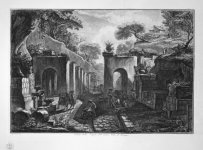
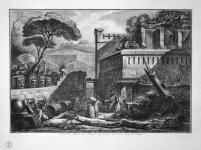
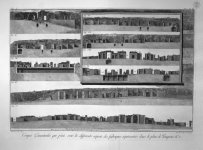
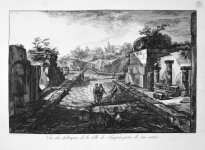
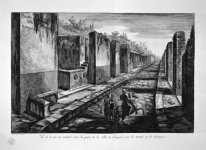
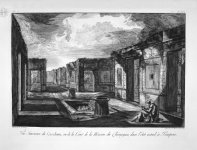
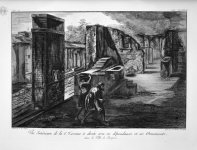
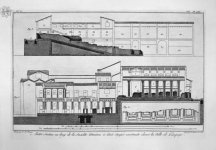
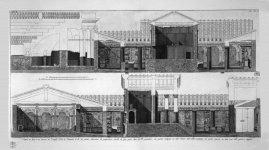
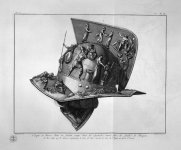
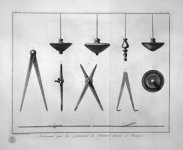
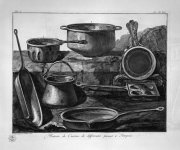
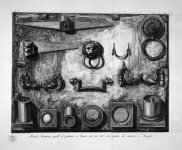
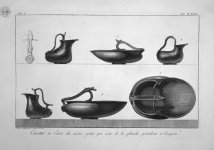
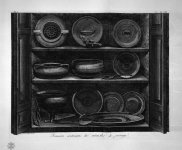
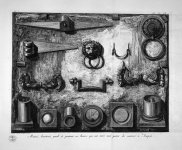
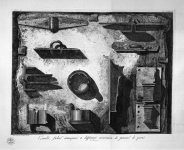
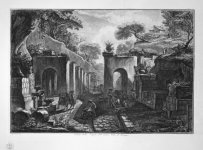
8. Christianity in "Before Christ" Pompeii
Sodom and Gomorra. 79 A.D. Pompeii new the Old Testament?
Of course, "One suggestion has been that this word square with its apparently Christian message was the scratching of people who dug down into Pompeii after the eruption. "
Source for the above. Below are a couple of etchings of the artifacts located in Pompeii, which bear Christian symbology. They were allegedly located by Rocque Joaquin de Alcubierre in February 1756. - The Crosses of Pompeii (I did not dig too deep into the Christianity issue. It honestly hurts my head. There are plenty of articles on the issue with people going back and forth.)9. Pompeii Surgical Tools
Basically, our knowledge of the ancient Roman medical tools is based on the Pompeii find. Now let us look at what those 16th and 17th century surgical tools looked like.
- Butchers & Surgeons: Rethinking the 17th-Century English Surgeon
- Barber, Doctor, Surgeon and Peruke (wig) maker in the 17th Century
Considering, that the Pompeii tools were kept in the dirt for a few hundred years, they look pretty good when compared to the 16th, 17th century ones. They are definitely matching the complexity.
And here is a little excerpt from, "Pompeii. Surgical Instruments"
Analysis: This collection of instruments was found in the 1770s when the Spaniard Francesco La Vega cleared the villa, which later was named as the House of the Surgeon. These forty medical instruments were made of either steel or bronze and are relatively similar to the medical tools that are used in modern society today. This includes forceps, catheters, needles, tweezers and scalpels. The fresco portrays how the Ancient Roman people could possibly have treated a battle wound.
Developed Conclusions: These surgical tools are unique because they are the best surviving example of what medicinal instruments would be available to people during the first century AD. These tools have been preserved for centuries under volcanic pumice and ash; this has protected these instruments from weather damage, and also the advancement in medicine that would mean the abandonment of these tools. The methods of Roman medicine were based on trial and error, due to the fact that there were no laws regarding the practice of medicine, nor were there any schools that taught the practice of medicine. Because of this, the intent in Roman medicine was to prevent rather than treat, and Roman surgeons learnt as they practiced, gaining experience every time they treated a patient. The medical efforts of the Romans have been considered quite advanced; this has been proven by the insight given from the surgical instruments uncovered in the excavations of Pompeii. These instruments are strikingly similar to modern surgical instruments and many of them were used for the same purpose that today’s surgeons use them for. The medicinal practises of the Ancient Romans was so advanced that it wasn’t surpassed until the nineteenth century. The preservation of this kit of 40 surgical instruments has given researchers the opportunity to accurately compare them to modern tools. This kit also shows the conditions, of which typical Roman surgeons had to endure during the first century AD. Much of the focus for Roman medicine was on damage to the human body during battle; the Roman Empire’s soldiers were offered the most effective treatment as they were considered a high value, at the time of the Mt. Vesuvius eruption, medical practitioners were well experienced in body repair such as bone setting.
I definitely like the "steel" part in there,considering the state of the ancient Roman metallurgy, "Many of the first metal artifacts that archaeologists have identified have been tools or weapons, as well as objects used as ornaments such as jewelry. These early metal objects were made of the softer metals; copper, gold, and lead in particular, as the metals either as native metal or by thermal extraction from minerals, and softened by minimal heat "
And we need to remember that ancient Roman surgical tool making abilities are being based upon these Pompeii tools.
KD Summary: Based on #6 (Domenico Fontana's Water Conduit: 1590s and water wells) alone, the city of Pompeii had to be a living city during the time when the Water Conduit was being built. This would mean that around 1590s the city of Pompeii was not buried under 20 feet of ash. The official date of 79AD is not supported by the available evidence, but... what else is new?


